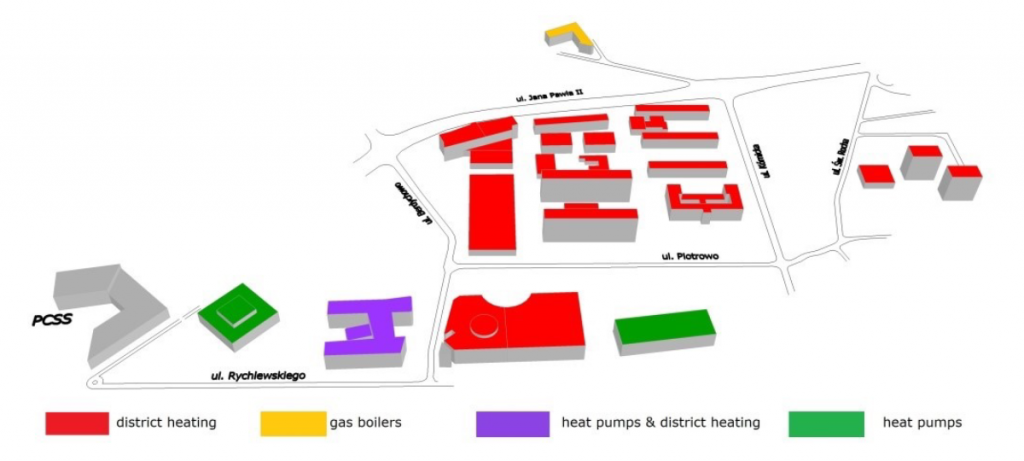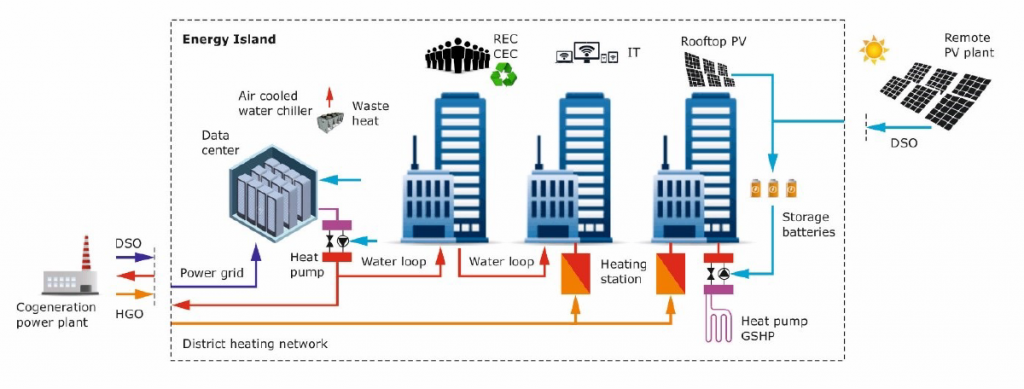The pilot consists of three entities:
The buildings are powered by the following energy sources:

Warta Campus is going to be a demonstrator of the zero-energy campus. The idea is to produce in the future electricity remotely in the planned PV power plant at the PUT-owned area at Kakolewo Airfield and to consume it within the campus heating pumps with heat source utilising excess heat from PSNC data center cooling system. Then the excess heat is even transferred to Veolia district heating system. With 16 MWp PV plant the campus is going to be annually zero energy and CO2 emission balanced.
The first proposal suggested to build a physical prototype of the system. Due to formal issues, only simulation studies of the systems are to be performed.
Main Goals:

Poznan - Poland